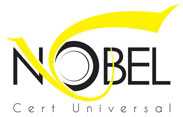This International Standard is addressed to top management. It provides guidelines for realizing financial and economic benefits through the effective application of eight quality management principles derived from ISO 9000:2005. These principles are subsequently referred to as “management principles” within the body of this standard. The intent of this document is to provide top management with information to facilitate effective application of management principles and selection of methods and tools that enable the sustainable success of an organization. A self-assessment is included as a gap analysis and prioritization tool.
This International Standard builds upon these interrelated management principles to develop processes that facilitate the realization of the organization’s objectives.
The management principles are
-
a) customer focus,
-
b) leadership,
-
c) involvement of people,
-
d) process approach,
-
e) system approach to management,
-
f) continual improvement,
-
g) factual approach to decision making, and
-
h) mutually beneficial supplier relationships.
Adoption of these management principles is a strategic top management decision. It affirms the relationship between effective management and realization of financial and economic benefits. Deployment of appropriate methods and tools fosters the development of a consistent systematic approach for addressing financial and economic objectives.
Economic benefit is generally attained through effective management of resources and implementation of applicable processes for improving the overall worth and health of the organization. Financial benefit is the result of organizational improvement expressed in monetary form, and realized by cost-effective management practices within the organization.
Successful integration of the management principles relies on the application of the process approach and the Plan-Do-Check-Act (PDCA) methodology. This approach enables top management to assess requirements, plan activities, allocate appropriate resources, implement continual improvement actions and measure results in order to determine effectiveness. It allows top management to make informed decisions, whether they relate to the definition of commercial strategies, the development of a new product or the execution of financial agreements.
Financial and economic benefits that can result from the application of the management principles include
-
— improved profitability,
-
— improved revenues,
-
— improved budgetary performance,
-
— reduced costs,
-
— improved cash flow,
-
— improved return on investment,
-
— increased competitiveness,
-
— improved customer retention and loyalty,
-
— improved effectiveness of decision making,
-
— optimized use of available resources,
-
— heightened employee accountability,
-
— improved intellectual capital,
-
— optimized, effective and efficient processes,
-
— improved supply chain performance,
-
— reduced time to market, and
-
— enhanced organizational performance, credibility and sustainability.
This International Standard is applicable equally to organizations with products that include services, software, hardware and processed materials. It is relevant in both the public and private sector and can provide useful guidance regardless of the number of employees, diversity of product offerings, revenues, complexity of processes or number of locations. It also provides support to public and governmental organizations to facilitate sustainable economic growth and prosperity.

